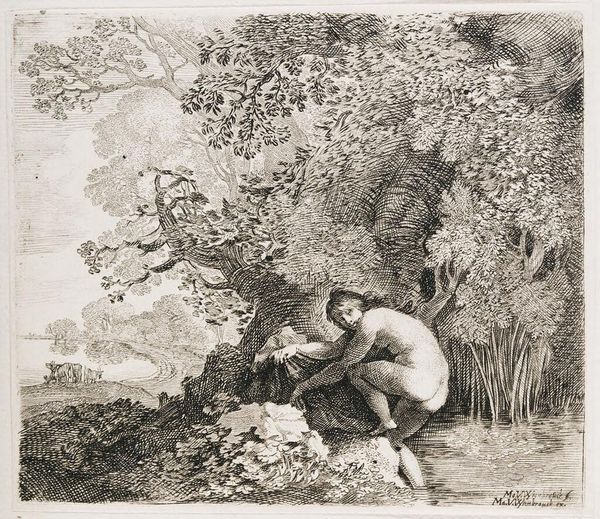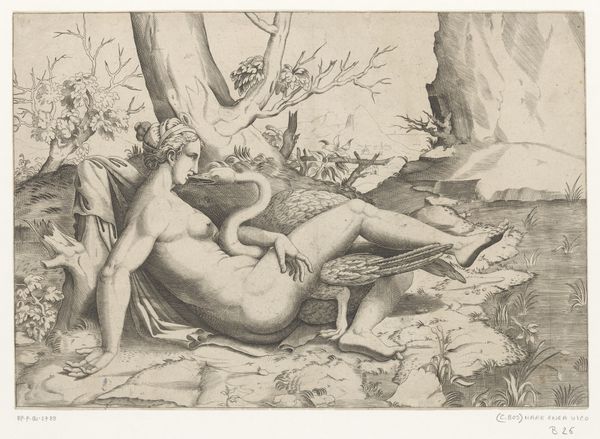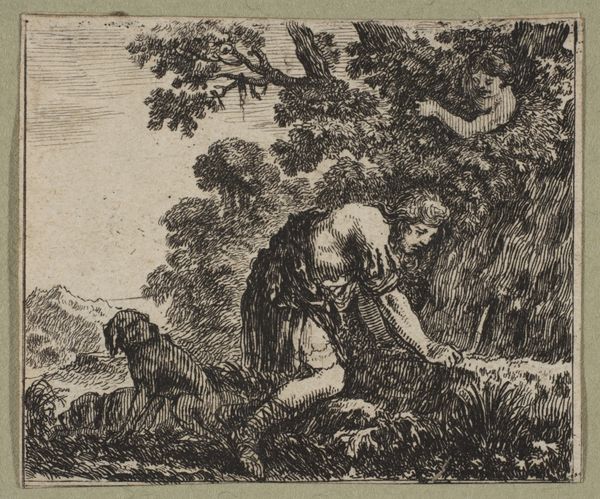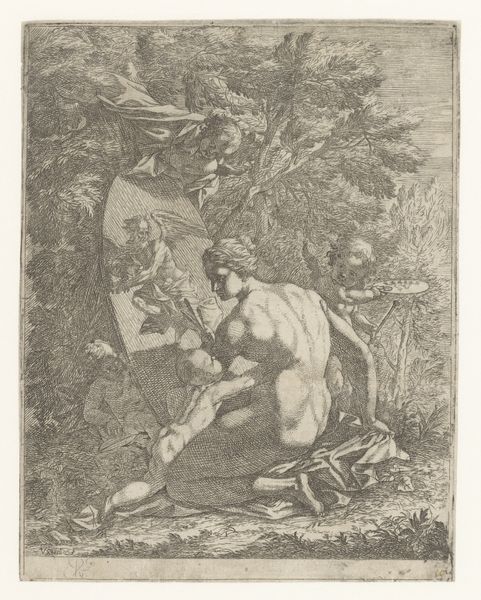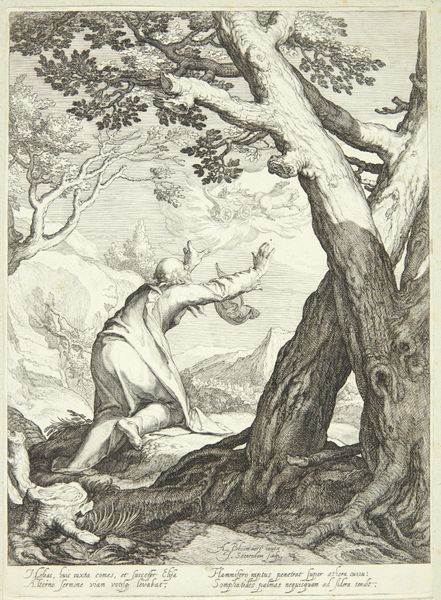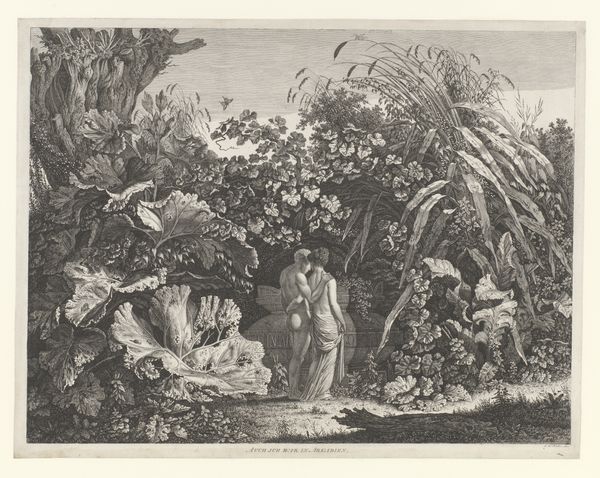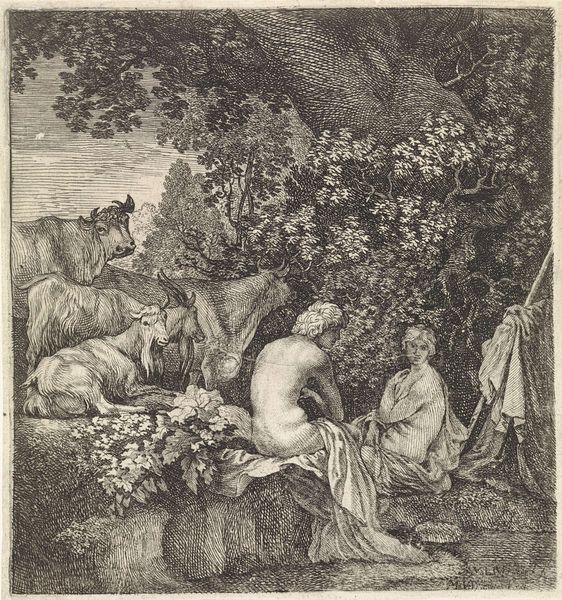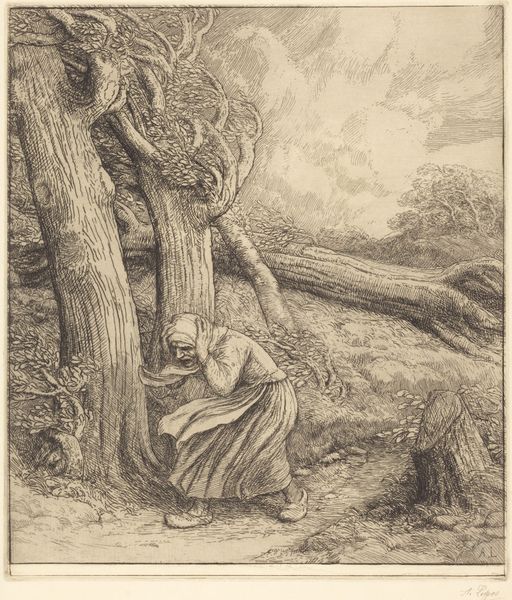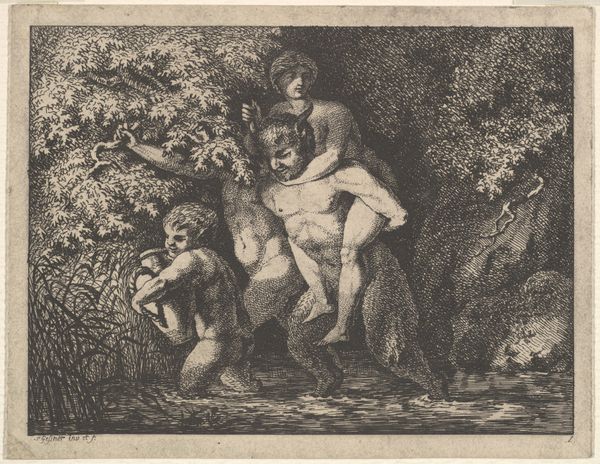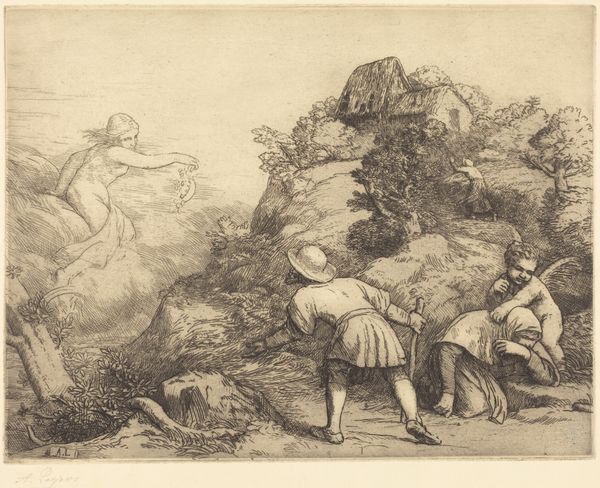
print, etching
#
baroque
# print
#
etching
#
landscape
#
genre-painting
#
nude
Dimensions: height 124 mm, width 146 mm
Copyright: Rijks Museum: Open Domain
Curator: I find this work intriguing. We're looking at "Baadster stapt uit het water" by Moyses van Wtenbrouck, an etching likely made sometime between 1600 and 1647. Editor: It's certainly a striking piece! The contrast between the figure emerging from the water and the dense, almost claustrophobic, foliage immediately grabs you. The texture created through etching gives it a haunting feel. Curator: The use of etching here really does allow for such fine detail, capturing both the delicate skin of the figure and the intricate leaves. Considering the period, how might this nude figure have been received, juxtaposed as it is against what seems to be a fairly domestic landscape? Editor: Right, it invites consideration of several angles. On the one hand, within the genre painting tradition, depicting the nude form in nature can be read through classical and idealizing lenses, invoking notions of purity and innocence. On the other hand, the figure's specific pose – stepping, not quite moving – could suggest the precarity of gendered encounters within spaces ostensibly devoted to simple recreation. It feels like an intentional play with classical form set in early modern cultural values. Curator: Absolutely, that tension is central. What I also find fascinating is how Wtenbrouck situates the figure—quite literally, emerging from the water—within a world teeming with daily life. The landscape is not just backdrop; there's a sense that human interaction and perhaps even disruption is inescapable. We get that feeling not only because of that nude, but with all of the flora filling the image so completely. Editor: The foliage creates an atmosphere where the female figure is almost hiding. I am getting more and more uncomfortable as I look at it. The cows in the distance reinforce your reading—but how much do they take notice? Is that indifference sinister, or a quiet part of an agrarian way of life? Curator: I would say both; maybe it has something to say about women that resonates now as much as back then. Thank you. This really helps. Editor: My pleasure. It is so important to view artwork within these historical frames. It allows a great intersectional dialog and perspective.
Comments
No comments
Be the first to comment and join the conversation on the ultimate creative platform.
